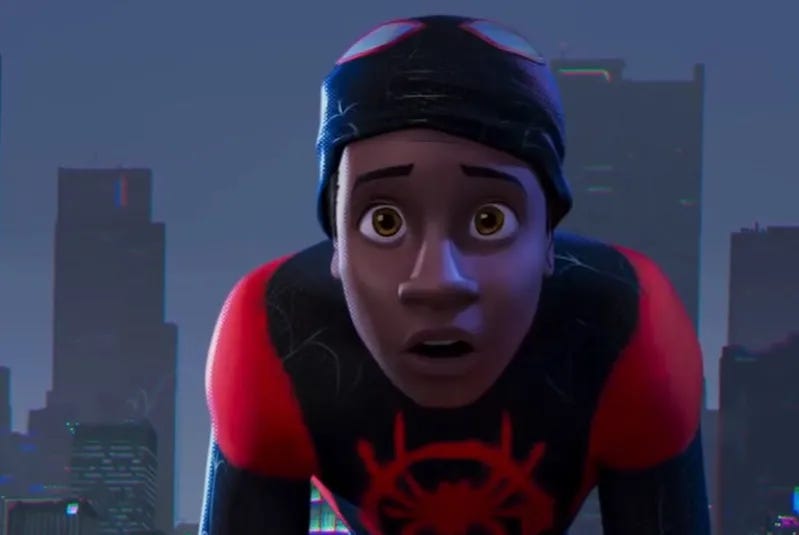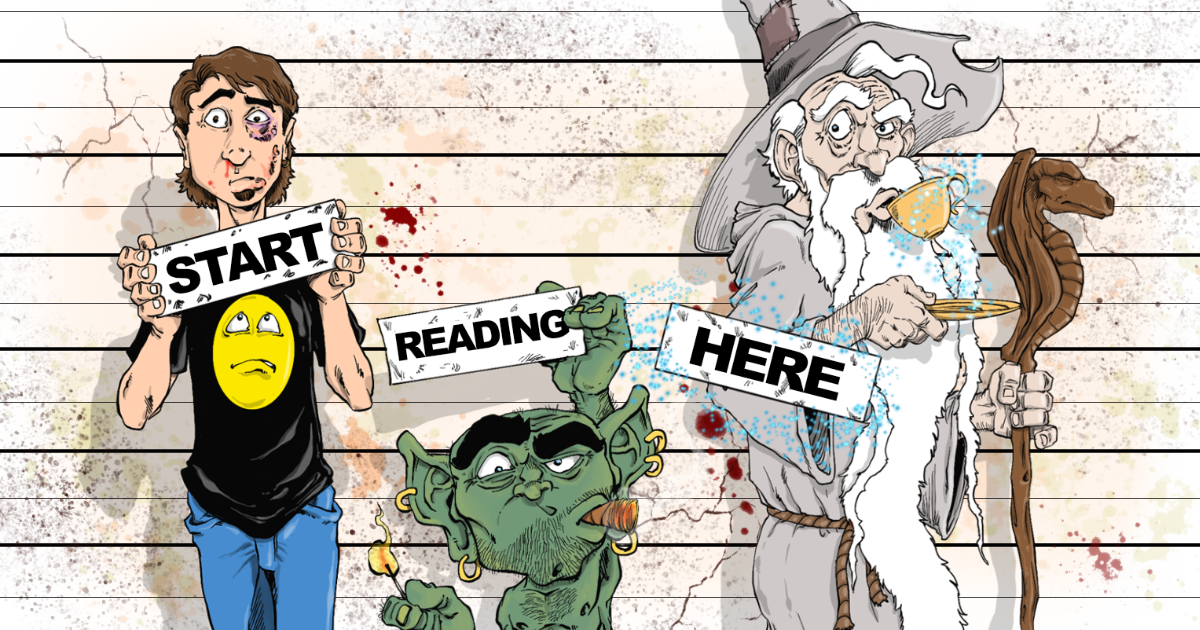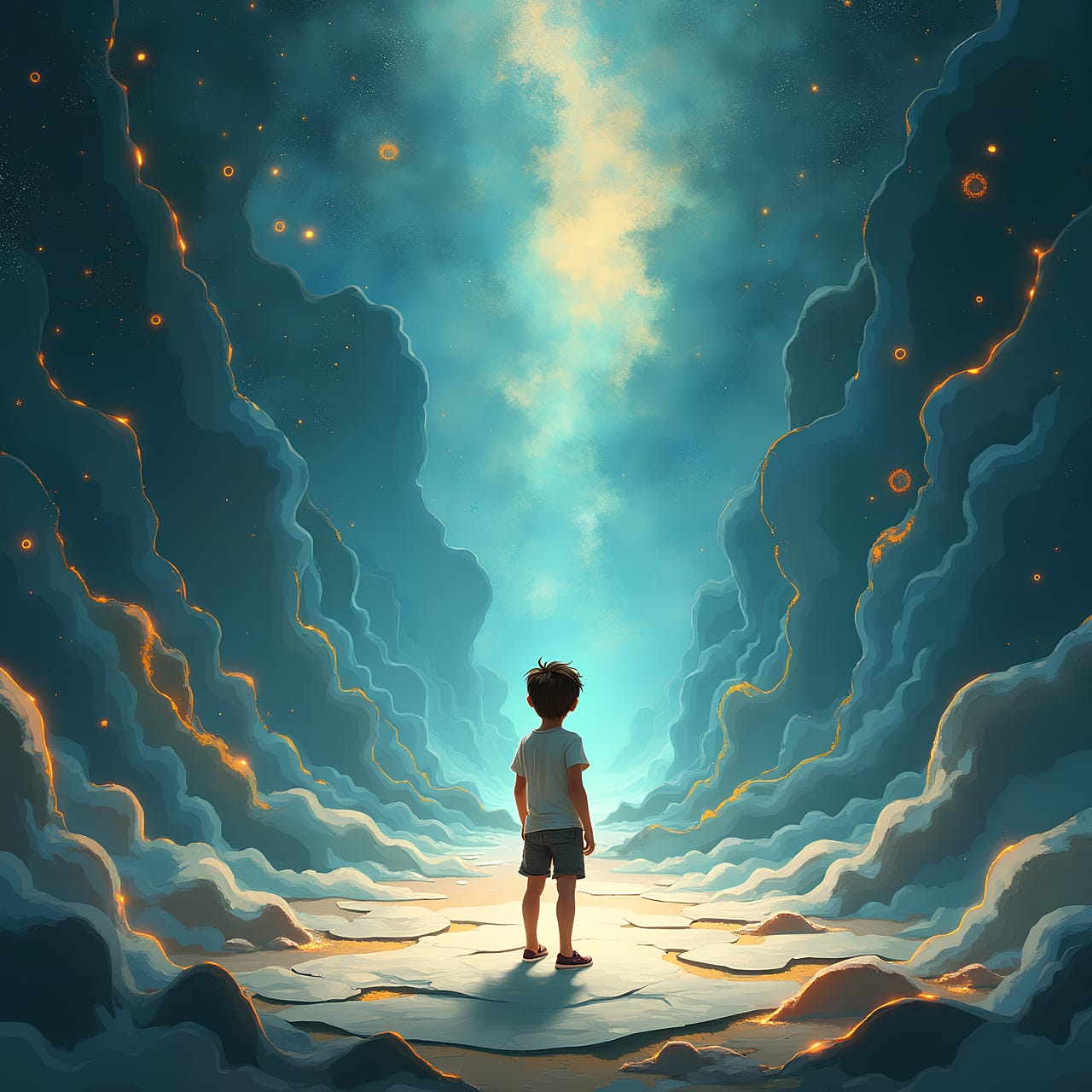Ink & Purpose: ✨ Daydreams Aren’t a Waste of Time: They’re Training
When a child is staring out the window, they’re not drifting. They’re becoming.
Previously in Ink & Purpose…
In The Role of the Hero, we explored how young readers don’t need perfect protagonists—they need persistent ones. Characters who fall, fumble, and rise again, showing that courage isn’t flawless… it’s faithful.
But where does that kind of strength start? Today, we turn inward—into the quiet, wandering space of imagination. Because what some call "zoning out," fiction reveals as sacred preparation.
☁️ Caught Staring Out the Window
I got in trouble for it all the time.
You know the look—the blank one, eyes glazed over, head tilted just slightly.
The teacher would be halfway through a math problem, and there I was, staring out the window like it owed me money.
I wasn’t trying to be disrespectful.
I wasn’t trying to tune anyone out.I was just… somewhere else.
I couldn’t help it.
One minute we were conjugating verbs or reviewing fractions, and the next—I was in a tower overlooking a city of floating islands, or arguing with a sarcastic dwarf about why he refused to wear pants in public. My body was in class.
But my mind was in a story.
And more than once, that earned me a scolding.
“Jaime, pay attention.”
“Focus.”
“Stop wasting time.”
But here’s the secret no one knew back then:
I was working.
I was building worlds.
I was training my mind to imagine possibilities beyond the page.
At the time, I didn’t have the words to explain it.
Heck, I didn’t even know what I was doing half the time.
But something in me needed to wander.
Because the real world didn’t always make sense.
But the one in my head?
That was a place where kindness mattered.
Where awkward kids could become heroes.
Where I could try things on, mess up, and no one would laugh at me for it.
So let me ask you something:
What if daydreaming isn’t laziness?
What if it’s a form of quiet bravery?
A way of reaching for more than what’s in front of you?
Of building the courage to become someone the world hasn’t met yet?
Because looking back…
Maybe I wasn’t staring out the window to escape life.
Maybe I was looking for a way to survive it.
🌱 Why Imagination Is Not Optional
We’ve all heard it said—usually with a sigh and a shrug:
“He’s got his head in the clouds.”
“She’s off in her own little world.”
As if that’s something to grow out of.
As if that makes a child less focused… less capable… less present.
But the truth is: kids don’t “zone out” for no reason.
They explore.
When a child’s gaze drifts, when they start fiddling with the corner of a notebook or tracing patterns in the air—they’re not escaping reality.
They’re working with it.
They’re processing, rearranging, and testing the boundaries of the world around them.
Imagination isn’t optional.
It’s a vital, living part of how kids learn to be human.
🧠 Imagination Isn’t Nonsense—It’s Practice
Think about it:
When a child is pretending to be a superhero, a pirate, a wizard, or a space explorer—they’re not just being silly.
They’re doing something sacred.They’re not escaping the world.
They’re testing how to live in it.
And while the costumes and cardboard swords might make adults smile, underneath all that imagination is a layered, active rehearsal of how to become something more.
🎭 Experimenting with Identity
Kids don’t always have the language to say:
“I want to be brave.”
“I wonder if I’m a leader.”
“I’m scared, and I don’t know who I am yet.”
But they can throw on a cape.
Or pick up a wooden spoon and declare themselves captain of the kitchen fleet.
Pretend play gives them a safe container to try on traits they aren’t sure they possess.
They step into courage through the mask of a hero.
They explore power by pretending to be a queen, a dragon, a Jedi Knight.
And sometimes, they explore vulnerability, too—being lost, scared, or rejected—so they can practice recovering.
That isn’t “just play.”
It’s identity work.
It’s how they ask the question:
“Who am I allowed to be?”
And start to build an answer for themselves.
🧩 Solving Emotional Puzzles
Inside these imagined adventures, kids are constantly wrestling with emotional challenges:
“What does it feel like to lose something important?”
“What if I’m misunderstood, but I still do the right thing?”
“If I help someone who doesn’t like me, will that make me weak or strong?”
You’ve seen it happen.
The pirate who turns kind.
The villain who becomes a friend.
The hero who gets hurt, but keeps fighting.
These moments aren’t random.
They’re stories that give structure to the feelings kids can’t always name.
Fiction gives them room to stretch emotionally, without judgment.
It becomes a quiet classroom where fear, shame, anger, hope, and love all get unpacked, examined, and explored—on their terms.
🗣️ Rehearsing Real Conversations
One of the most incredible things about kids is how often they act out real-world conversations in imaginary ones.
They re-run fights they’ve had.
Practice apologies they haven’t made yet.
Try out jokes they wish would land better next time.
Pretend to be the parent… or the teacher… or the one finally brave enough to speak up.
And if you watch closely, you’ll see it:
They’re not just creating stories.
They’re rehearsing life.
It’s like emotional dress rehearsal.
And sometimes, it’s the only way they can process complex situations without being overwhelmed.
Because it’s not about getting it “right.”
It’s about getting familiar.
They learn how to speak up.
How to say no.
How to own their feelings.
How to fix what’s been broken.
And even if they never repeat those rehearsals aloud again…
The practice stays with them.
So the next time you hear a child muttering under their breath while fighting invisible monsters in the living room, or arguing with themselves in funny voices in the backseat of the car?
Don’t correct them.
Don’t shush them.
Don’t pull them back into “reality.”
Because what they’re doing is real.
They’re shaping the emotional and moral foundations of their future self—one dragon, one kitchen-battle, one whispered monologue at a time.
And that kind of play?
That’s not nonsense.
That’s becoming.
When we dismiss imagination as fluff, we miss the fact that it’s the sandbox of the soul.
It’s the place where kids stretch their empathy.
Challenge their insecurities.
Write and rewrite their understanding of what’s possible.
Because before a child can stand up to a bully, they have to imagine themselves doing it.
Before they can admit they were wrong, they have to rehearse the risk of vulnerability.
Before they can believe they’re capable of doing hard things—
They need the space to see it in their mind first.
This is where cognitive flexibility and emotional resilience are born.
💡 Cognitive flexibility is the ability to shift between ideas, adapt to new situations, and see problems from multiple perspectives. It’s a key predictor of success—not just academically, but socially and emotionally.
And guess what builds it?
Imagination.
When kids create new scenarios in their heads, when they explore “what if” questions and try on different versions of themselves, they’re stretching those mental muscles.
They’re becoming more adaptable. More aware. More able to navigate the complexity of life.
💪 Emotional resilience—that all-important bounce-back ability—comes from practicing challenges in safe ways.
That’s exactly what stories and daydreams offer:
The chance to feel fear without real danger
To experience loss without devastation
To make hard choices without real-world consequences
It’s emotional weight training, and kids do it naturally when we give them the time, space, and permission to drift into wonder.
So no—imagination is not a luxury.
It’s not a cute personality quirk.
It’s not something to grow out of.
It’s something to grow into.
And if we want our kids to be strong, brave, adaptable humans—
We can’t afford to train that out of them.
We need to protect it.
Nurture it.
Celebrate it.
Because a child who can imagine themselves into something more?
Is already halfway there.
🧠 The Neuroscience of Daydreaming: The Brain's Hidden Workshop
When our minds wander—during a quiet moment, a lull in conversation, or while gazing out a window—our brains are far from idle. Instead, they engage the Default Mode Network (DMN), a complex system of interconnected brain regions that becomes active during restful introspection. This network includes the medial prefrontal cortex, posterior cingulate cortex, precuneus, and angular gyrus.
The DMN is instrumental in various internally focused tasks such as recalling memories, envisioning the future, and considering others' perspectives. It's during these periods of "mind-wandering" that we often engage in deep reflection and creative thinking.
🔬 Daydreaming Enhances Creativity and Problem-Solving
Research indicates that the DMN plays a crucial role in our ability to generate creative ideas. A study published in Frontiers in Psychology found that individuals with higher creative abilities exhibited increased functional connectivity between the inferior prefrontal cortex and the DMN. This suggests that creative thinking involves a dynamic interplay between brain regions associated with spontaneous thought and those responsible for cognitive control.
Moreover, the DMN supports "positive constructive daydreaming," a term coined by psychologist Jerome Singer to describe daydreaming that fosters planning, creativity, and self-reflection. This form of daydreaming allows individuals to mentally simulate future scenarios, enhancing their problem-solving skills and emotional preparedness.
🧠 Building Emotional Resilience Through Mind-Wandering
Beyond creativity, the DMN is also implicated in emotional processing and self-referential thought. Mary Helen Immordino-Yang's research highlights the DMN's role in integrating emotion and cognition, which is essential for developing empathy and moral reasoning. Her studies suggest that daydreaming facilitates the internalization of social and emotional experiences, contributing to a child's ability to navigate complex interpersonal situations .
Additionally, the DMN's involvement in autobiographical memory and future planning underscores its importance in helping individuals learn from past experiences and prepare for future challenges. This capacity for "mental time travel" enables children to rehearse responses to potential scenarios, thereby enhancing their emotional resilience.
🧩 Integrating Thought and Emotion: The DMN's Role
The DMN doesn't operate in isolation; it interacts with other brain networks to facilitate complex cognitive functions. For instance, during creative tasks, the DMN collaborates with the executive control network to balance spontaneous idea generation with goal-directed thought. This integration allows for the refinement of imaginative ideas into actionable plans.
Furthermore, the DMN's engagement during rest underscores the brain's intrinsic need for downtime to process information and emotions. Encouraging periods of unstructured thought, such as daydreaming, can thus be beneficial for cognitive and emotional development.
🧠 Embracing the Power of Daydreaming
Understanding the neuroscience behind daydreaming reveals its significance in fostering creativity, problem-solving, and emotional growth. Rather than viewing daydreaming as a distraction, recognizing it as a vital cognitive process can inform educational practices and parenting strategies.
By providing children with opportunities for unstructured thought and imaginative play, we support the development of essential skills that contribute to their overall well-being and success.
📚 Footnotes & References: The Neuroscience of Daydreaming
Default Mode Network (DMN) – Wikipedia
https://en.wikipedia.org/wiki/Default_mode_networkKnow Your Brain: The Default Mode Network – BrainWorld Magazine
https://brainworldmagazine.com/know-your-brain-the-default-mode-network-wakeful-daydreamingCreative Thinking and the Default Mode Network – NIH (PMC article)
https://www.ncbi.nlm.nih.gov/pmc/articles/PMC4410786Positive Constructive Daydreaming – Frontiers in Psychology
https://www.frontiersin.org/articles/10.3389/fpsyg.2013.00626/fullMary Helen Immordino-Yang’s Work on Emotion, Imagination, and the Brain
https://www.imagination-institute.org/publicationsThe DMN’s Role in Planning and Autobiographical Thought – MedLink Neurology
https://www.medlink.com/news/neuroscience-origins-and-relevance-of-the-default-mode-network
🎭 Fiction as Mental Rehearsal
There’s something sacred about a child sitting quietly with a book.
To the outside world, they’re still. Calm. Distracted.
But inside?
They’re practicing how to be human.
That’s the hidden magic of fiction. It’s not entertainment—it’s emotional rehearsal. It’s stepping into another skin, feeling the weight of choices you didn’t have to make, and learning from consequences you didn’t have to endure.
When a child reads or daydreams, they enter a simulated world—one where they can face fear, grief, anger, and heartbreak safely.
They can walk through love and loss and betrayal, all without real-world damage… but with real-world wisdom waiting on the other side.
🧠 Fiction Teaches Courage
When a child reads about a quiet, hesitant character who chooses to be brave—even when they’re scared—something stirs inside them.
They don’t always realize it, but their brain is already trying it on.
They're asking:
“What would I do?”
“Would I stand up like that?”
“What if that was me?”And that’s not pretend.
That’s preparation.
Take Harry Potter, for example—not in the grand, wand-blasting moments, but in the quiet acts of courage:
In The Sorcerer’s Stone, it’s Neville Longbottom—the shy boy who stands up to his own friends, saying,
“I’m not letting you get into trouble again!”
It’s a small moment. But it hits hard.
Because most kids don’t relate to the chosen one with a lightning scar.
They relate to Neville—scared, unsure, shaking in his robes… but standing anyway.
And when they read that scene?
They rehearse that bravery.
Not out loud. Not all at once.
But something begins.
Or think about Frodo Baggins in The Lord of the Rings—the unlikeliest of heroes. Small. Overwhelmed.
And yet, he volunteers to carry the Ring.
“I will take it… though I do not know the way.”
That’s not swagger.
That’s courage—the kind that knows it isn’t ready, but chooses the burden anyway.
When kids read that line, something sacred happens: They whisper it in their mind.
They feel the tremble of uncertainty… and the resolve to keep walking anyway.

Or for a more modern voice—Miles Morales in Spider-Man: Into the Spider-Verse.
He fails. Hard. Often.
But he keeps getting back up.
The moment he takes that leap off the skyscraper—hood up, hands shaking, heart pounding?
That’s courage at its most relatable.
And every kid watching thinks:
“Maybe I can leap, too.”
These aren’t fantasy-only lessons.
They’re emotional blueprints.
Fiction lets kids experience fear… without judgment.
It lets them walk the path of risk and discomfort from the safety of their imagination.
And the more they walk that path in their minds?
The easier it becomes to walk it in real life.
That’s why stories stick.
Because long after the book is closed, the scenes keep playing.
Again. And again. And again.
Until one day, a moment comes in their life—a hallway, a playground, a hard conversation—and they feel that familiar weight in their chest.
And instead of freezing…
They step forward.
Maybe with a whisper.
Maybe with shaking hands.
Maybe not perfectly.
But they do it.
And somewhere deep inside, that character who stood before them once…
Is standing beside them now.
💔 Fiction Teaches Loss
When a character dies in a book, it hurts.
It doesn’t matter if they were real or not.
It doesn’t matter if they were a wizard, a farmer, or a talking tree.
It doesn’t even matter if you saw it coming from five chapters away.
That pain? It’s a first taste of grief.
It comes quietly—no warning, no safety rails. One moment you're turning a page…
The next, you’re sitting there stunned.
Eyes burning.
Heart cracked open.
And yet, even in that ache… you feel safe.
Because fiction lets us practice grief without being destroyed by it.
I still remember the first time it happened to me.
I was just a kid, knees tucked up on the couch, reading Anne of Green Gables like it was air.
And then...
Matthew Cuthbert died.
No battle. No monster. Just life—real and quiet and unbearably human.
I didn’t even understand why it hit me so hard.
I closed the book and just sat there, the silence suddenly louder than the words.
It wasn’t a tantrum kind of grief.
It was that soft ache in the chest—the kind that lingers for hours.
Looking back?
That was the first time I’d ever grieved for someone I loved… without losing someone in real life.
That’s what fiction does.
It gives kids a place to feel loss, to watch it unfold, to walk alongside it—without being overwhelmed.
They learn:
What it means to mourn.
What it looks like to go on living after a goodbye.
That pain doesn’t mean you’re broken.
That healing doesn’t erase the love you carry.
Think about:
Charlotte’s Web, when Charlotte passes quietly after saving Wilbur.
There’s no grand ceremony. Just the quiet end of a life well-lived.
And yet generations of children have felt that goodbye like a weight in their lungs.Bridge to Terabithia, when Leslie dies suddenly—and Jess has to learn to live in a world without her.
He breaks. Then he grows. Not because he gets over it, but because he learns to carry it.Or even The Hunger Games, when Rue is killed.
Katniss doesn’t just cry—she sings. She honors her.
And in doing so, readers learn that grief can be defiant. That remembrance is a form of resistance.
These stories don’t protect kids from pain.
They teach them how to move through it.
Because the truth is: loss is coming for all of us.
And when it finally arrives in the real world—when a pet is buried, when a grandparent is gone, when a friendship ends or a parent can’t be there—
A child who’s felt grief through fiction is not lost in the dark.
They recognize the shape of it.
They remember the character who survived it.
They remember how healing begins.
And that gives them something no lecture ever could:
A quiet kind of strength.
A light to hold onto.
A voice that says, “You’re not alone in this.”
🤝 Fiction Teaches Forgiveness and Empathy
We read about flawed characters—
Ones who lie.
Ones who lash out.
Ones who break promises, say the wrong thing, or fail the people they love.
And somehow… we still care about them.
That’s not a mistake.
That’s empathy blooming.
It starts quietly.
You turn the page, watch a character make a terrible decision—maybe one that hurts someone else.
And you’re mad.
You should be mad.
But then… the story keeps going.
And somewhere between their regret and the way they stare at the floor, you feel your anger shift.
You begin to understand why they did it.
You feel their fear.
Their shame.
Their longing to make things right.
And you find yourself thinking:
“I didn’t like what they did…
But I still care about them.”
That is the moment empathy takes root.
Because fiction doesn’t ask us to just watch.
It asks us to feel—even for people we disagree with.
And that’s exactly the kind of emotional strength kids need in the real world.
They need to know:
It’s okay to be hurt.
It’s okay to be disappointed.
But it’s also okay to forgive.
Even when it’s hard.
Even when it’s complicated.
We see it in Zuko from Avatar: The Last Airbender—a former villain who spends most of the story angry, conflicted, and chasing the wrong goals.
But when he finally owns his mistakes and tries to make things right?
It’s not perfect. It’s earned.
And that’s why kids love him.
Because he changes. And because they’re allowed to change, too.
Or Amos Diggory in Harry Potter, when Harry brings back his son’s body.
Even in his grief, even in his pain, he shows Harry compassion.
And Harry, who has every reason to shut down emotionally… doesn’t.
He chooses empathy.
These moments don’t slap you across the face.
They sneak in.
They whisper.
“People mess up. But they can grow.”
“People hurt us. But sometimes… they didn’t mean to.”
“We’re allowed to let go of the anger.”
And sometimes, the hardest forgiveness isn’t for others.
It’s for ourselves.
Fiction makes space for that, too.
Because kids often carry shame they don’t know what to name.
They think they should be better. Braver. Nicer. Stronger.
But when they see a character who stumbles—and still gets back up, still gets loved, still gets a second chance?
That becomes permission.
Permission to be imperfect.
To try again.
To believe they’re still worthy of good things.
Fiction teaches kids that empathy isn’t weakness.
It’s not surrender.
It’s strength—the kind that chooses compassion over control.
Grace over pride.
Growth over blame.
And in a world getting louder and angrier by the day…
That skill is revolutionary.
🧬 Fiction Builds Identity
When a child follows a character through hardship, they’re not just reading.
They’re merging.
They’re stepping into someone else’s shoes—and finding out that, somehow… those shoes fit.
Not because they’re perfect.
But because they’re familiar.
Maybe the character is awkward.
Maybe they say the wrong thing too often.
Maybe they feel too small, too loud, too quiet, too weird, too… everything.
And suddenly, the reader realizes:
“That’s me.”
Or maybe…
“That’s who I want to be.”
Because fiction reflects more than plots and problems.
It reflects possibility.
Kids see themselves in these characters:
A stubborn kindness in the face of cruelty
A quiet strength that doesn’t need attention to be powerful
A fire for justice, even when the world calls them foolish for it
And in that reflection, a seed is planted.
Not a fantasy.
A question.
“If they made it through that…
Maybe I can, too.”
I’ve had kids tell me they saw themselves in Wendell.
And not because he was powerful.
Not because he was slick or smart or confident.
But because he was:
Unsure
Awkward
Out of place
Constantly questioning if he belonged
And he kept going anyway.
That’s the part that matters.
It wasn’t the staff. It wasn’t the prophecy.
It was the persistence in the face of self-doubt.
One boy, probably twelve or thirteen, came up to me after a school visit.
Quiet. A little hesitant.
And he said:
“I liked Wendell because…he keeps trying, no matter what.” He opened his mouth again, but hesitated.
I stood there, silent, waiting on him, watching the emotions roll across his face. When he looked up at me, I got one of the most genuine smiles I think I'd ever seen.
"Sometimes I wish that could have been me."
He wasn’t just talking about fiction.
He was talking about himself.
Giving himself permission to not be perfect.
To not be the fastest learner or the loudest voice.
But to try anyway.
That’s when I knew we were doing something bigger than telling stories.
We were helping kids build identity.
Brick by brick. Page by page.
Because fiction doesn’t hand kids easy answers.
It hands them a mirror… and gives them time to look.
Time to ask:
“Who am I, really?”
“What do I believe?”
“Who could I become… if I kept going?”
And those questions don’t always get answered right away.
But fiction gives them the space to start asking.
And sometimes, that’s all they need to begin.
🪟 Where My Best Ideas Come From
Some of the best ideas I’ve ever had… started while I was staring at a wall.
Not writing. Not planning. Not even trying.
Just… drifting.
I’ve built worlds in the steam of a shower.
Had plot twists appear in the pattern of ceiling tiles.
I’ve heard entire conversations between characters while pulling weeds in the garden or staring at clouds.
They weren’t forced.
They weren’t scheduled.
They came in the silence.
When I was young, I got in trouble for zoning out.
Teachers thought I wasn’t paying attention.
Sometimes I wasn’t.
But not because I didn’t care—because I was somewhere else.
My imagination wasn’t skipping school.
It was building something.
And it still does.
The books I’ve written… the characters readers love most…
They were born out of those quiet, mind-wandering moments.
Moments when I was technically “doing nothing”…
But was becoming everything I needed to be.
So if you’re a parent reading this—
If you’ve ever snapped your fingers in front of your kid’s face and said, “Earth to _____…”
Take a breath.
Because while you’re wondering why they’re not paying attention,
They might be architecting the next big idea that changes their life.
They might be:
Rewriting a moment they wish had gone differently.
Inventing someone they want to become.
Testing out courage, hope, humor, or healing.
They might be writing stories that haven’t found words yet.
And if you’re a kid—or a grown-up who still remembers zoning out and being told it was wrong?
Let me say it plainly:
That silence was never empty.
It was a sanctuary.
That quiet space inside you—the one filled with fog and fireflies and half-built dreams?
That’s where the real work happens.
So the next time you feel like you’re “wasting time”…
Remember: Your best ideas are often the ones that sneak up on you…
when you finally stop trying to force them.
🧑🏫 What Adults Need to Understand
Let’s say it clearly:
Daydreaming is not disobedience.
It’s not laziness.
It’s not a character flaw.
It’s one of the most powerful forms of internal development a child has.
And too often, we treat it like a distraction to be corrected.
We praise kids who are task-focused, achievement-driven, measurable.
We celebrate the ones who color inside the lines and always raise their hands first.
And don’t get me wrong—discipline and focus matter.
But not at the cost of imagination.
Because imagination is where selfhood begins.
It’s where a child gets to be:
Curious without consequence
Brave without risk
Honest without fear
And if we constantly interrupt that process with “get back to work,” we’re not helping them focus.
We’re teaching them to distrust their own minds.
As a parent, teacher, mentor, or coach—you have influence. You help shape the internal narrative kids carry into adulthood.
So here’s what you can do:
✅ Make Space for Silence
Not every moment has to be filled.
Let kids get bored. Let them stare at the ceiling. Let their brains meander.
Because sometimes, in that stillness, a question forms:
“What if…?”
And that question might become a story.
Or a solution.
Or a new part of themselves they never knew existed.
✅ Protect Creative Margin
Not every part of life should be scheduled.
Kids need “margin”—unstructured, unsupervised time to wonder.
Leave paper and pencils on the table.
Fill shelves with stories.
Say yes to nonsense. Yes to doodles. Yes to talking to invisible dragons in the living room.
Those things might look silly…
But they are essential forms of mental play.
✅ Validate the Drifters
If a kid is zoning out—don’t assume the worst.
Maybe they’re retreating because the world feels too loud.
Maybe they’re writing a novel in their head.
Maybe they’re healing.
Instead of snapping them back with, “Focus!”—try asking:
“Where were you just now?”
“What were you thinking about?”
You might be shocked at the depth of what they say.
And if they don’t answer?
That’s okay, too.
Because that inner world isn’t always ready to be shared.
But it’s always growing.
And when we protect a child’s right to imagine—we give them more than freedom.
We give them permission to become.
🕯 Final Thoughts – Defenders of Wonder
The kids with wild imaginations aren’t escaping life.
They’re rehearsing for it.
They’re not avoiding reality.
They’re learning how to hold it. Shape it. Survive it.
They’re testing heartbreak. Borrowing bravery. Forging empathy.
They’re getting the emotional reps they’ll need later—when the losses are real, when the doubts creep in, when the world asks them to stand and they’re not sure they can.Imagination isn’t a distraction.
It’s training armor.
This generation doesn’t need more worksheets.
They don’t need more rigid systems, more achievement charts, or bells that tell them when to stop thinking and start filling in bubbles.
They need more fuel for wonder.
They need freedom to chase an idea for no reason.
To create without an outcome.
To think impossible things—and not be laughed at for it.
Because those kids?
The ones doodling in the margins?
The ones daydreaming at recess or whispering storylines to themselves in bed?
They’re not off track.
They’re becoming.
If we want a world with more empathy, more courage, more grace—
It starts with giving kids the space to imagine those things first.
That’s why this matters.
Because imagination isn’t just how we escape.
It’s how we expand.
It’s not optional.
It’s essential.
So to every parent, teacher, mentor, creator—
You are not small in this work.
You are building invisible sanctuaries.
And they matter.
Let’s defend their wonder.
Let’s guard their dreams.
Let’s teach them that their inner world is not a waste of time—it’s a source of strength they can carry into everything they become.
✅ Call to Action: Fuel the Fire
If this stirred something in you… don’t let it sit.
📣 Share this.
With a parent whose kid spends more time in their head than on the homework.
With a teacher who's been wondering if they should give just a little more space to wonder.
With the storyteller, the quiet dreamer, the kid who hums to themselves while building whole worlds out of scrap paper.
💬 Leave a comment:
Where did you go when you daydreamed as a kid?
What did you build? Who did you become, if only in your head?
🛠 Let’s raise a generation that knows:
Daydreaming isn’t drifting.
It isn’t laziness.
It’s not a thing to outgrow.
It’s becoming.
And if no one’s told you lately—
You are MORE than you THINK you are.
— Jaime
NEXT TIME: The Unseen Battle: Fiction vs. The Digital Void
THANK YOU: For reading why I do what I do.
If you’ve missed the series, here are the Why Fiction Matters links:
🌌 What If Wonder Is the Missing Ingredient in Every Great Story?
✨ The Stories We Tell Aren’t Harmless. Sometimes, They’re Everything.










Good stuff; this could have been 3 separate articles. “Fall seven times, stand up eight.” —Japanese Proverb
Just brilliant work, Jaime. Looking forward to the book.